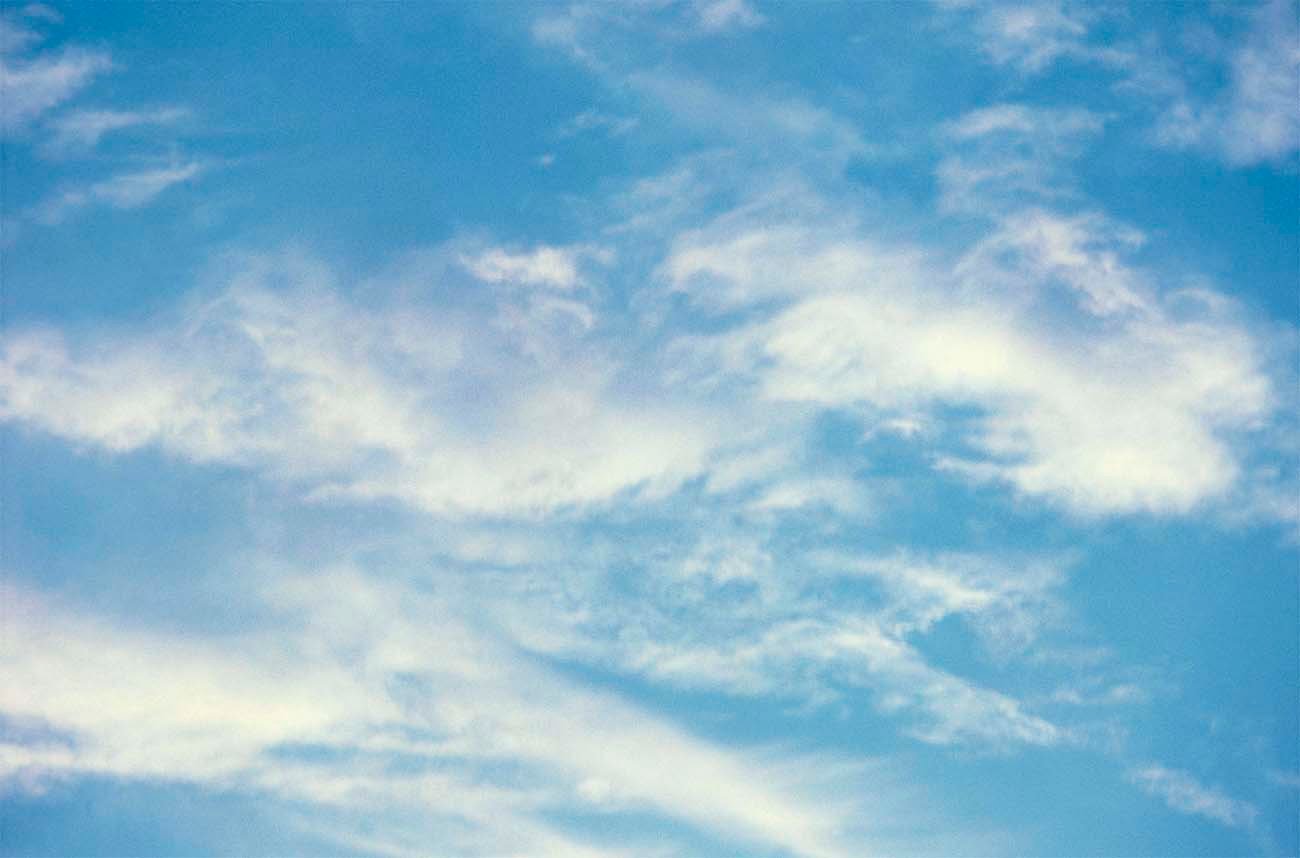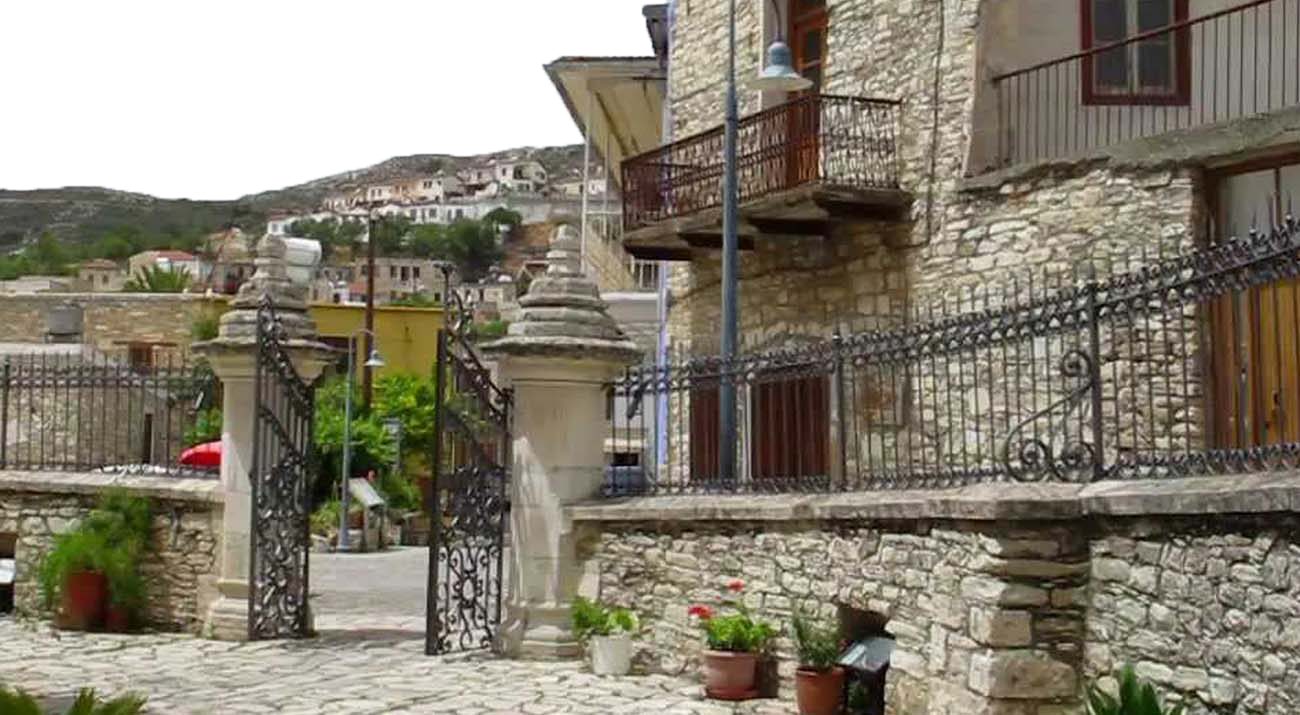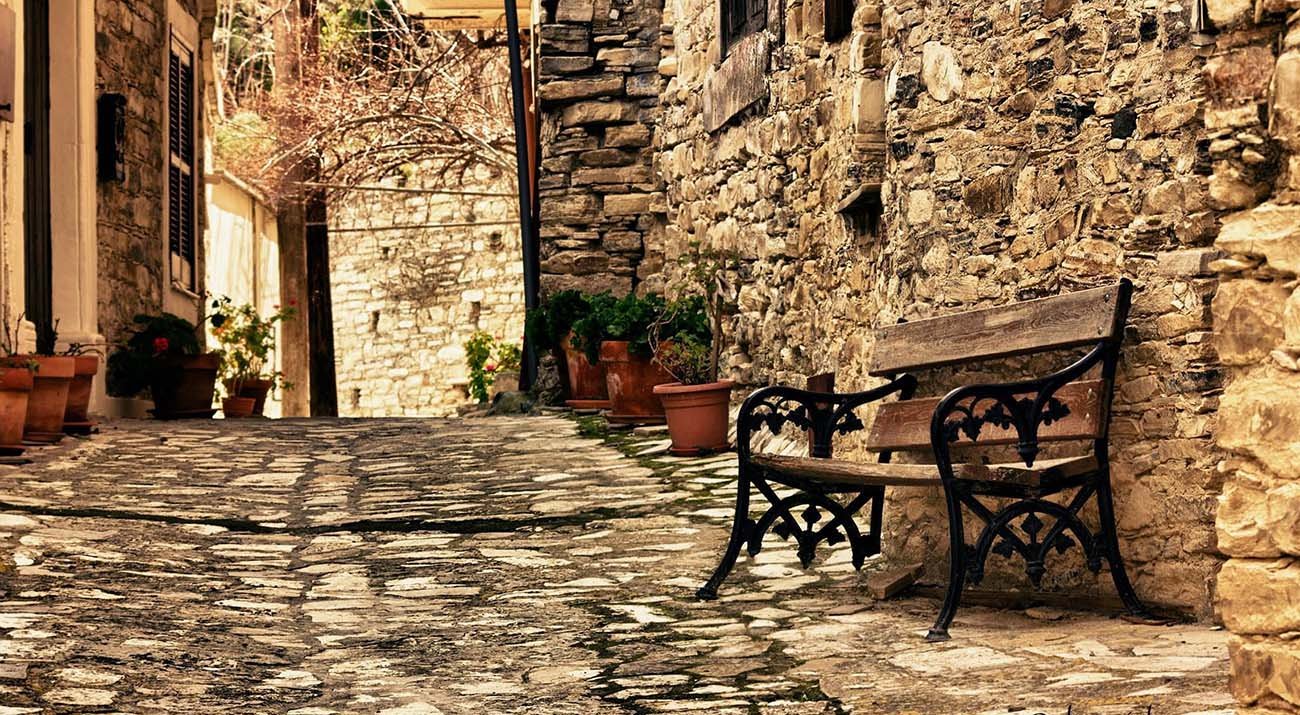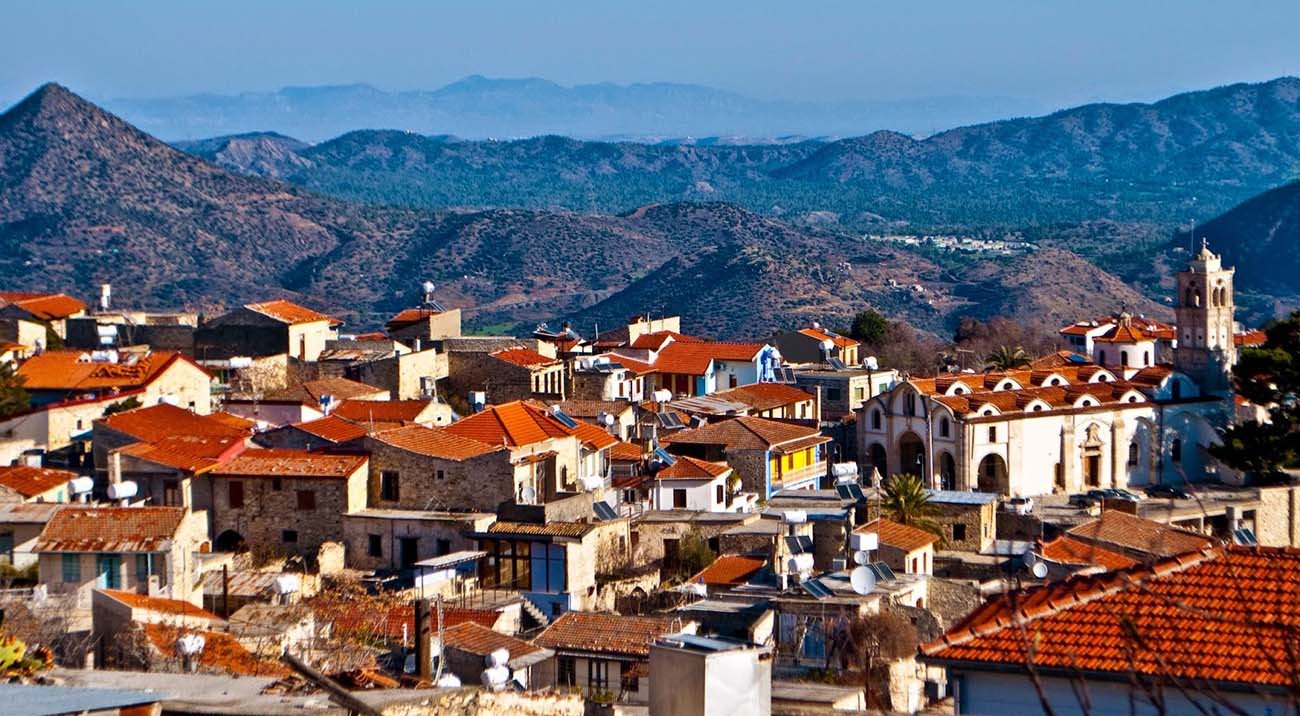
Tucked away and nestled in the foothills of the Troodos Mountains in the southeast of Cyprus is a charming village with old stone buildings, cobble stone streets, narrow winding alleys, and a colorful past, Lefkara. This is where the Cypriot folk needlecraft art was born − the famous ‘lefkaritiko’ − the reputation of which has gone beyond the frontiers of Cyprus and has become known in most European countries and beyond. Lefkara owes its welfare and prosperity to this needlecraft and to its trade launched in the late 19th century, flourishing during the first thirty years of the 20th century.
4VIP Tours will take you to this charming village, 650m above sea level, 45 km from Nicosia, 30 km from the Larnaca airport and just 12 km from the Nicosia –Limassol highway. Its easy accessibility makes it worth a halt in a tour in Cyprus.
Lace making and embroidery is a 2,000-year-old Cypriot tradition. The lace making tradition has been passed down from generation to generation. The lace ladies lovingly make ‘Lefkaritika’ lace using the same techniques that were introduced by the Venetian noblewomen starting from 1489. The Venetian ladies summered in the cool mountains of Lefkara to escape the heat of the cities.
Lefkara lace is a form of cutwork where thin warp threads are counted and carefully cut away with small scissors. Next the cut area is embroidered with pearl cotton thread to create a tiny opening, which is either left open or filled in with embroidery stitches resembling filigree and latticework. The satin stitch and buttonhole stitch are used in this tedious process. The finished lace must look as good on the back as the front, no sloppy work is allowed. This type of drawn and counted thread embroidery is very time consuming and detailed requiring concentration and excellent embroidery skills.
Traditional lefkaritika is done on white, ivory, or khaki Irish linen with a single strand of white, brown, or beige DMC pearl cotton thread. The same geometric motifs have been used for centuries with designs for the embroideries inspired by nature such as the sun, daisies, and rivers. The patterns all have names like: Leonardo da Vinci, spider web, snowflake, Byzantine, and almond. Usually a zigzag pattern representing a river is embroidered around the inside border of the cloth and then edged with a lace trim for the finishing touch.
As for habitation, considering the archaeological findings, the Lefkara region has most probably been inhabited for centuries. Though there is little relevant evidence, the settlement is likely to have progressively been established and has developed reaching its current status during the Arab raids between the 7th and 9th century A.D. The inhabitants of the island were probably forced by the raids to move from the coastal areas where they were living in this period to inland homes, looking for safer places to settle.
Lefkara is also famous, apart from lefkaritika, for silver handicraft. The village takes its name from the chalky white ground caused by the presence in abundance of silica and limestone. Lefkara is derived from a combination of the Greek words ‘lefka’ (Greek for white) and ‘ori’ (Greek for mountains and hills). Sightseeing in Cyprus would pale into insignificance were Lefkara left out of your itinerary. It is a complete answer to the mundane query of what to see in Cyprus.
It features picturesque architecture, and for a village with only 1,100 inhabitants, it is surprisingly split into two administrative regions: upper and lower Lefkara. What strikes you almost as soon as you drive on the cobbled streets is the number of small cluster of women who sit in the narrow village streets working on their fine embroidery, as they have for centuries. The village is also known for its skilled silversmiths who produce delicate filigree work. You cannot leave Lefkara out when sightseeing in Cyprus.
This village was apparently the largest town in Cyprus in the 16th century. Why it regressed into obscure anonymity is not known. There is a theory though, that in 1570, when the Turks conquered Cyprus Lefkara offered to surrender as quid pro quo for certain concessions. According to unverified historical sources of the western world, Lefkara was the first victim of the Ottoman incursions. The village was ransacked and its population massacred. A further significant event likely to have occurred during that period is the small surrounding settlements being abandoned for safety reasons and the fact that their population moved to the main Lefkara settlement.
A folklore museum in the town shows visitors what life was like in Cyprus a hundred years ago. The almost contemporaneous museum is located in a restored house and exhibits the furniture and effects of a wealthy family, local costumes and examples of the Lefkara lacework. Legend has it that Leonardo da Vinci visited the village in 1481 to purchase a lace cloth for the main altar of the Duomo di Milano in Italy. World War II forced an abrupt end to the sale of embroidery, which never recovered fully, though the budding tourism industry brought some of its artisans back to resume lefkaritika and silver filigree work. Lefkara is one of the leading tourist attractions in Cyprus.
During the occupation period by the Franks, Lefkara became the see of the Greek Orthodox Bishop of Limassol, Amathus and Curium and was one of the four Orthodox Bishops’ sees. Later Lefkara during the occupation period by the Venetians (1489 - 1570 A.D.) is referred to as a summer resort for the Venetian nobles and their families. According to some researchers, the Lefkara needlecraft ‘lefkaritiko’ goes back to this period and the nobles’ wives summering there influenced to quite an extent the technique used by the Lefkara women.
Some years later, when the British colonisation took place in 1878, Lefkara and Morphou were declared the first rural municipalities in Cyprus in 1883. A Town Hall becoming operational there has contributed significantly in its progress and its inhabitants’ welfare. A number of regulations were enacted, setting things in order in the large village. An abattoir, a municipal market with a distinct butcher’s shop and a pig meat shop were established. Street lamps were installed; the water scarcity problem was dealt with; an electric generator was installed in Lefkara in 1934 to supply all houses with electricity resulting from an agreement co-signed by the Municipality and a private company. In 1938 a telephone line connecting Lefkara with Larnaca was installed.
Today, the population of the village is not more than 1,100 inhabitants amongst whom there are many expats, because of emigration and rural-urban migration. A significant number of locals have been living in New York, London, South Africa and even Australia.
Private car with driver for 3 hours
120 euro
Additional hour
25 euro
Cost based on 2-4 Person
Private minibus with driver for 3 hours
220 euro
Additional hour
35 euro
Cost based on 5-8 Person





